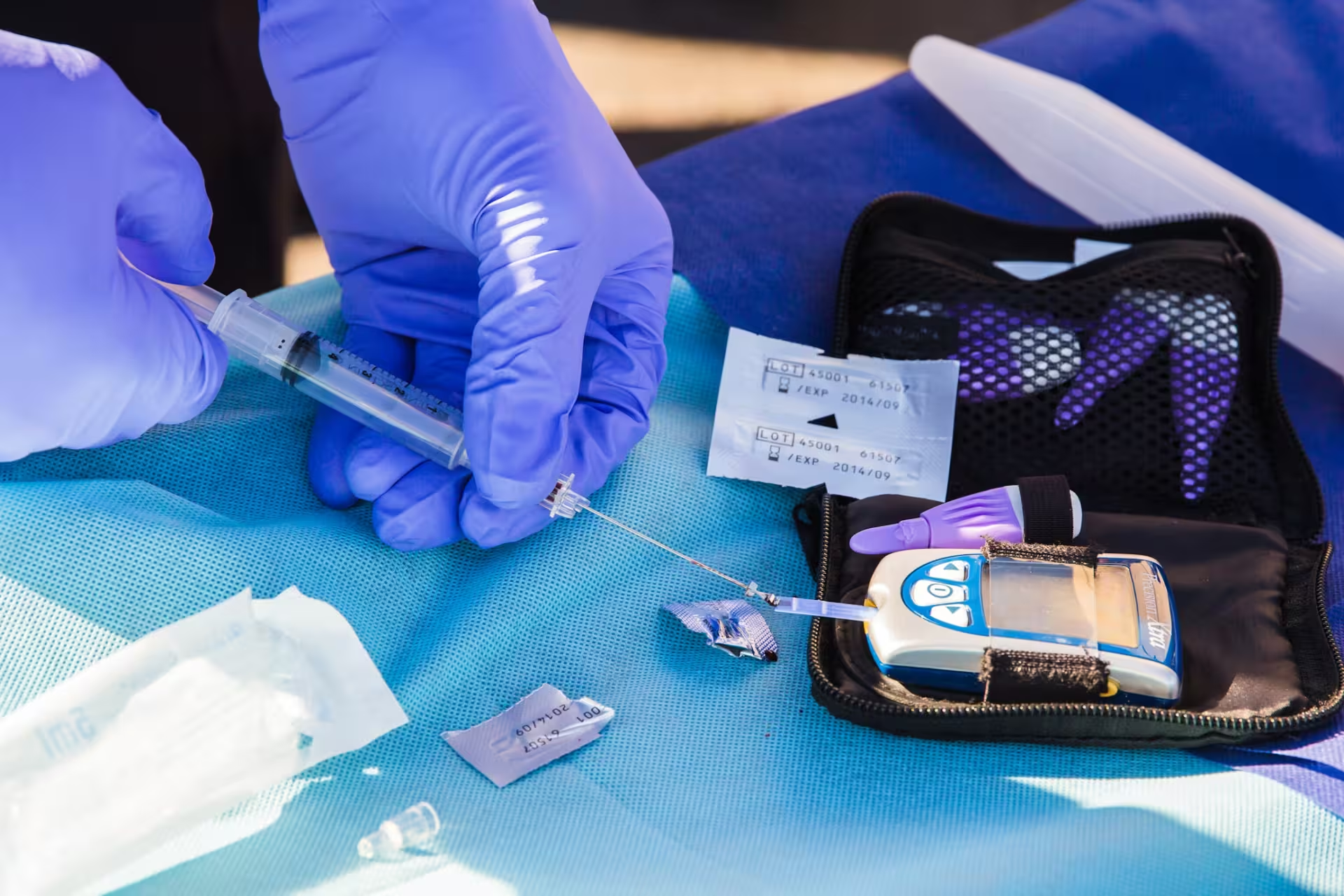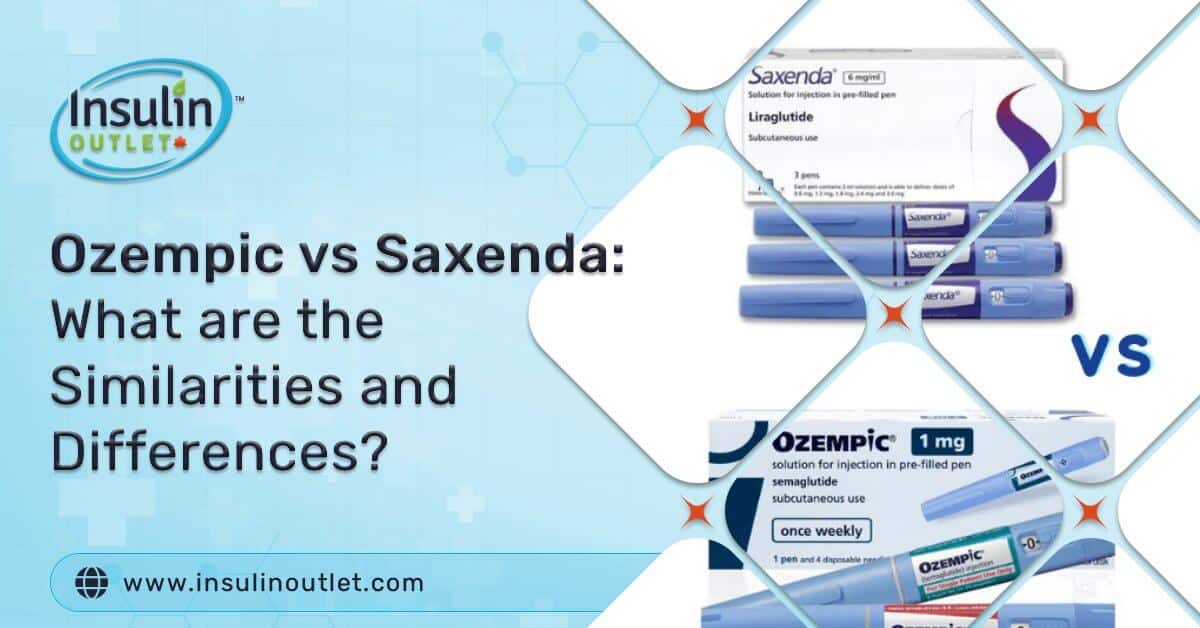
Knowing the basics of insulin and glucose gives a clear understanding of their role in the body. Both insulin and glucose are connected and work together to balance blood sugar and ensure a consistent energy supply throughout the body.
This post will summarize the normal relationship between insulin and glucose.

Table Of Contents
ToggleWhat is the Normal Relationship Between Insulin and Glucose?
Before we summarize the normal relationship between insulin and glucose, you need to know the basics. Glucose is the simplest type of carbohydrate that’s used as the main source of energy for the body cells. It primarily comes from the food we consume like carbs. Glucose is then carried to the cells through the bloodstream. The body can either use glucose as energy or store it for later use.
Insulin is a hormone secreted in the pancreas, an organ located behind the stomach. The beta cells in the pancreas are responsible for producing insulin hormone. Insulin assists glucose to enter the body cells to be used for fuel or stored. The hormone also supports the breakdown of fats and proteins into energy.
Typically, the pancreas releases more insulin when the glucose level is high. When the pancreas doesn’t produce sufficient insulin or the body isn’t able to respond to insulin, diabetes occurs. Diabetes is a condition that occurs when the blood sugar levels are too high. That’s the normal insulin glucose relationship.
How Insulin and Glucose Work in Blood Sugar Regulation?
Both insulin and glucose play an important role in balancing blood glucose levels. As mentioned before, the two work together. Here’s a detailed look at the relationship between glucose and insulin and how each works in blood sugar regulation.
Insulin
When you consume carbs, the body converts it into glucose, which enters the bloodstream and causes the blood sugar levels to increase. In response, this action activates the beta cells in the pancreas to release insulin. The hormone binds to the cells and signals them to absorb glucose from the bloodstream.
Cellular uptake of glucose facilitates the supply of energy throughout the cells and reduces blood sugar levels. Excess glucose is stored in the liver as glycogen. Insulin helps maintain healthy blood sugar levels by:
- Supporting glucose uptake- insulin facilitates glucose uptake in the cells, thereby enabling energy production or storage for later use
- Balancing glycogen storage in the liver- the hormone directs the liver to store glucose as glycogen. In low blood glucose levels, glycogen is converted back to glucose and directed into the bloodstream.
- Preventing glycogenesis- glycogenesis is the process of storing excess glucose in the bloodstream for later use. Insulin prevents glycogenesis therefore preventing excess glucose production. It also aids in balancing blood sugar levels.
Glucose
Carbs in our diet are broken down into glucose. The liver is involved in glucose storage in the form of glycogen. Glucose travels throughout the body through the bloodstream. Cellular uptake of glucose leads to energy production.
Glucose Disorders

In case of an imbalance in insulin and glucose levels, the following conditions occur:
Type 1 Diabetes
This condition happens when the pancreas does not produce insulin or produces less insulin. The condition is less common but still occurs in some people. Low insulin levels cause glucose to remain in the bloodstream hence causing high blood sugar levels.
People with type 1 diabetes usually require a dose of insulin to maintain normal blood sugar levels. The condition can lead to complications like gum disease, nerve damage, and vision impairment. The immune system attacks the beta cells in the pancreas.
Type 2 Diabetes
The condition happens when the body produces insulin, but the cells fail to respond. It’s known as insulin resistance and is one of the common types of diabetes. The beta cells in the pancreas produce more insulin, and since the cells can’t keep up, it causes high blood sugar levels.
Gestational Diabetes
This condition usually occurs from the 24th and 28th week of pregnancy. It affects glucose uptake by the cells and interferes with insulin function. The cause of gestational diabetes isn’t known.
Some studies have revealed that the condition occurs due to hormonal changes causing the placenta to produce cells that make your body insulin-resistant. The good thing is that the condition disappears after childbirth.
Prediabetes
This condition occurs when the body produces sufficient insulin but does not use it efficiently. It leads to high blood sugar levels, and if not contained, it can lead to type 2 diabetes.
Symptoms of Imbalanced Blood Sugar Levels
Recognizing the symptoms of imbalanced blood sugar levels helps in managing the condition. It also gives you a clear sign of when to seek medical attention. Here are the main symptoms to watch:
- Frequent urination
- Fatigue
- Increased thirst
- Vision problems
- Headaches
- Dry mouth
- Itchy skin
- Increased hunger
- Slow-healing of wounds
- A numbing or tingling sensation
Seek immediate medical attention if you have severe symptoms like nausea, vomiting, abdominal pain, rapid breathing, and difficulty concentrating.
Factors Causing Insulin and Glucose Imbalance
- Excess Weight- accumulation of fat in the abdomen or visceral fat can cause insulin resistance. Studies suggest that a high BMI (body mass index) causes an increase in insulin resistance.
- Physical inactivity- insulin resistance and prediabetes can occur when you are not doing any physical activity. Physical inactivity prevents cellular uptake and lowers blood sugar levels.
- Lack of sleep- according to experts, healthy sleep for an adult is 7-9 hours. Healthy sleep supports insulin function, glucose regulation, and metabolic health.
- Diet- a high-carb and saturated-fat diet can cause insulin resistance. Naturally, the body processes a high-carb diet very fast, which leads to high blood sugar levels. As a result, the pancreas is overworked and, over time, causes insulin resistance.
- Hormonal disorder- hormones in the body perform different functions. Some hormones can affect how the body utilizes insulin, thereby leading to insulin resistance.
- Some medications- some steroids, high blood pressure medication, and HIV treatment can cause insulin resistance.
- Genetics- inherited genetic conditions contribute to the risk of insulin resistance and metabolic disorders.
Managing Glucose Disorders
Managing Type 1 Diabetes
Insulin therapy
This is the first and preferred method of managing type 1 diabetes. There are different types of insulin, including short-acting, rapid-acting, intermediate-acting, and long and ultra-long. The method of administration varies depending on the type of insulin, but the most common are injections and insulin pumps.
Monitoring your blood sugar
You should check and record your blood sugar levels. Record real-time data multiple times a day using a glucose meter. Your blood sugar levels may change due to food, hormonal changes, stress levels, medication, and alcohol.
Proper diet
To keep healthy blood sugar levels, consume a balanced diet rich in fruits, vegetables, and whole grains. Count your carbs intake and be consistent with your meals as skipping can cause irregular blood sugar levels.
Physical activity
Maintaining regular physical activities like running, walking, swimming, or cycling is a good way to manage type 1 diabetes. You can incorporate moderate aerobic exercise every week and perform daily physical activities like walking.
Stress management
Type 1 diabetes may worsen if you don’t manage your stress levels. Practice activities like breathing exercises, yoga, and meditation to help you cope with stress.
Medical check-ups
Always check with your healthcare practitioner for long-term blood sugar control. Keep up with your checkups and ask for regular screening to check the progress of the condition.
Managing Type 2 Diabetes
Eat healthy
Focus on a healthy diet that includes fruits, vegetables, whole grains, healthy fats, and lean proteins. Avoid sugar foods and practice portion control to prevent overeating.
Weight control
Maintaining a healthy weight keeps your blood sugar levels in control and reduces cholesterol levels. If you’re overweight, consider losing up to 15% of your body weight. Work with a dietitian for professional guidance.
Physical activity
Have a regular exercise routine to keep your body moving. Incorporate aerobic and resistance exercises to limit inactivity. Staying active helps in managing type 2 diabetes and overall health.
Diabetes medication
Your doctor will prescribe type 2 diabetes medication if you can’t control your blood sugar levels with diet and exercise. The common prescription medication is metformin. Others include Glinides, Sulfonylureas, DPP-4 inhibitors, Thiazolidinedines, etc. All these medications support the beta cells to produce more insulin.
Monitor your blood sugar level
Get a glucose meter to help monitor your blood sugar levels at least once a day or depending on your doctor’s recommendation. You can check your levels before and after exercise and keep a record of the results.
Insulin therapy
Most doctors recommend insulin therapy as a last resort if diet and exercise do not work. Your doctor will determine the type of insulin suitable for you and the dosage. You may stop insulin therapy as soon as you attain stable blood sugar levels.
What is the Relationship Between Glucose and Insulin?
Understanding the relationship between insulin and glucose aids in maintaining a healthy balance of your blood sugar levels. It prevents the risk of metabolic disorders and other serious complications.
There are various ways of managing diabetes including exercise, a healthy diet, reducing stress, medication, and maintaining a healthy weight. Remember to stay in touch with your healthcare practitioner to monitor your progress, recommend new ways of managing your blood sugar levels, and curate a personal treatment plan suitable for your needs.
Bibliography
- American Diabetes Association (ADA)
Blood Glucose and Insulin URL: https://diabetes.org/about-diabetes/high-blood-sugar#:~:text=When%20you%20eat%2C%20your%20body,is%20a%20problem%20with%20insulin.
Date accessed: June 30, 2024 - Medical News Today
An Overview of Insulin
URL: https://www.medicalnewstoday.com/articles/323760
Date accessed: June 30, 2024 - National Library of Medicine (Medline Plus)
Blood Glucose
URL: https://medlineplus.gov/bloodglucose.html
Date accessed: June 30, 2024
Share:












